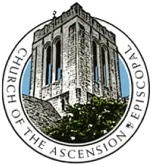From the Rector…
Transitional is a movement word. It belays a sense of unsettledness—a belief that a thing is in flux and must be moving from one state of being into another. We associate transition with becoming something more or digressing to something less. Whatever transition is, we rarely assume it to be static.
For years, Church Size Theory taught that a Transitional Parish was one that was either growing into a Program Size Parish or shrinking to a Pastoral Size Parish. It did not leave open the possibility that Transitional Size might actually be a stable size congregation. Program size parishes have an average Sunday attendance or, ASA, of 225-800 congregants. Pastoral size parishes fall in the range of 76-140. Transitional size parishes have an ASA of 141-224. The ASA of a transitional size church is telling. It has strong implications sociologically that lead it to experience its life as a congregation in fundamentally different ways than other sizes.
If you’ve ever read The Tipping Point, you might remember the Rule of 150. This is a sociological concept that says groups function best at or under 150 people. As soon as a group begins to exceed 150 people, certain stressors on function, transactive memory, and social standards can begin to threaten the group. The Rule of 150 says that groups at or less than this size know one another well and maintain an unwritten accountability to the group that does not threaten its norms. Beyond this limit those norms experience certain stressors that can fracture a group.
At the 150-member mark, groups tend to break off into smaller groups to function. Indigenous tribes often demonstrate this life cycle. When the tribe begins to near 150, there is an instinctual understanding that the tribe will divide and branch out. This movement keeps the tribe healthy and allows for growth. Tribes that do not find transformative ways to grow discover that their functioning is limited, and they are unable to absorb the larger number in a healthy manner. This does not mean that a community cannot be more than 150 persons, but it does mean that for an entity or institution to function well and in a healthy manner, it will need to find ways to “break up the tribe” so to speak.
The ASA at CoA in 2023 was 184. In 2022 it was 167. Clearly, for the last two years we have functioned as a Transitional Size Parish. We are also right in the target range of the Rule of 150 having outdistanced the Rule and trying to figure out how to continue to function. If sociology can teach us anything it is that the current stressors of a congregation of this size require us to think about the Rule of 150 and what it means to be a Transitional Size Church.
Church Size Theory now recognizes that Transitional Size Parish is a real thing. It is a parish size that a church may operate in for one hundred years and many members life spans. (And yes, I agree the name should probably be changed as it leads to confusion.) As a Transitional Size Parish, we can identify certain implications about our life together. We know that churches of this size always need more staff and one more clergy person than they already have but that budget and income complicate the ability to hire anyone else. Power and authority must shift from a few to the empowerment of many alongside the establishment of leadership and training initiatives designed to raise up new leaders of the church in a fluid manner. The vestry must serve as leaders of the church—not simply doing nor simply visioning but guiding and facilitating the work of the church. The rector is primarily an administrator of a stretched-cell organism that struggles to meet the demands of all members due to resources spread thin across a variety of groups.
One of the greatest challenges a Transitional Size congregation might face is the temptation to get focused on a theology of scarcity and forget the abundant life it has to offer. Coupling that temptation with a group size that exceeds 150—making it difficult for everyone to know everyone else—can offer certain challenges around inclusivity, communication, the attention of the rector, and the neglect of some ministry. Our call as we move into 2024 is to begin to identify how these challenges have affected our common life together and find ways to build one another up.
I am excited about the opportunity ahead and the commitment that so many of you continue to voice in your love of Ascension and desire to see her continued vitality and growth in God’s kingdom. Pray for Ascension. Pray for our continued understanding of who we are and who we are called to be as we partner with God and one another in the building up of the kingdom.
Light and Life,
Candice+
